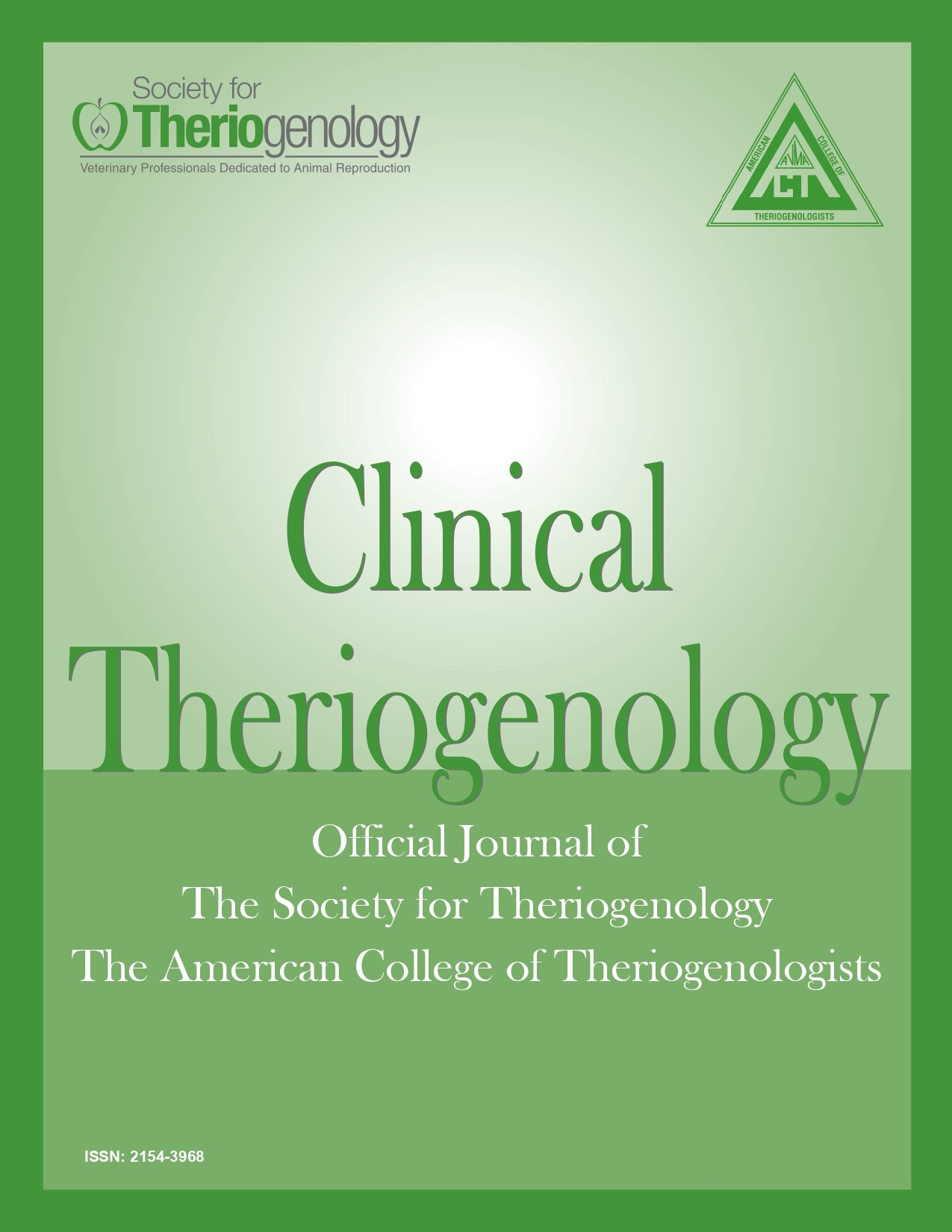Doxycycline diffused to fetoplacental unit and with no apparent complications to resulting foal
Abstract
Antimicrobial therapy is used in broodmare practice to treat various bacterial infections (e.g. pneumonia, septic arthritis, enterocolitis, and placentitis). Aminoglycosides, ß Lactams, and potentiated sulfonamides are all considered safe for use in pregnant animals and metronidazole is assumed to be safe, based on anecdotal use in clinical practice. However, there is limited knowledge about putative toxicity and ability of tetracyclines to diffuse to the fetoplacental unit. Due to evolving antimicrobial resistance, expansion of veterinary armamentarium is warranted. Doxycycline is a broad spectrum antimicrobial frequently used to treat intracellular microorganisms due to its high cellular penetration. This study aimed to assess doxycycline diffusion to fetoplacental unit during late pregnancy and potential toxicity to resulting foal. Twelve healthy light horse breed mares were enrolled in this study at 320 days of pregnancy. Six mares received compounded doxycycline (10 mg/kg, PO, q12h, Rood and Riddle Pharmacy, Lexington, KY) until delivery, whereas 6 mares were untreated controls. All mares had daily physical examinations and pH assessments of mammary gland secretions for detection of impending foaling. Blood samples were collected before commencement of study and then every 7 days until foaling for determination of complete blood cell counts, blood chemistry and plasma concentrations of doxycycline. Foaling was induced with oxytocin (10 units, IM) when mammary secretion pH was d 6.4. During second stage of labor, allantoic fluid was collected by free catch and amniotic fluid by puncture. Blood samples from mares and foals were collected immediately after parturition and 7 days postpartum. Foals were examined twice a day during their first 7 days. Concentrations of doxycycline in plasma (mare and foal) and fetal fluids were assessed with LC MS/MS. After foaling, mares and foals were subjected to standard postpartum care for 60 days. Blood biochemistry and blood cell counts were assessed for normal distributions with Shapiro-Wilk’s test and then compared with ANOVA (Statistix 10.0). Significance was set at p < 0.05. On average, mares received 15 ± 2 days of doxycycline. Doxycycline concentrations in allantoic fluid were significantly higher than in amniotic fluid (73.55 ± 13.93 versus 8.32 ± 3.31 ng/ml, respectively). Doxycycline was also detected in plasma of foals immediately after birth (35.52 ± 4.28 ng/ml). None of treated mares or their respective foals developed any clinical signs suggestive of doxycycline toxicity (e.g. diarrhea and jaundice). There were no differences in results of complete blood cell counts or blood chemistry between treated versus untreated control foals. In conclusion, administration of doxycycline to late term pregnant mares did not result in apparent clinical abnormalities in mares or respective foals. This was apparently the first study to demonstrate that doxycycline crosses the equine placenta and achieves high concentrations in the fetoplacental unit. Although longitudinal studies assessing the potential side effects of doxycycline to foals born from treated mares are necessary, based on our findings, doxycycline can be used to treat various infections in pregnant mares.
Downloads

This work is licensed under a Creative Commons Attribution-NonCommercial 4.0 International License.
Authors retain copyright of their work, with first publication rights granted to Clinical Theriogenology. Read more about copyright and licensing here.





